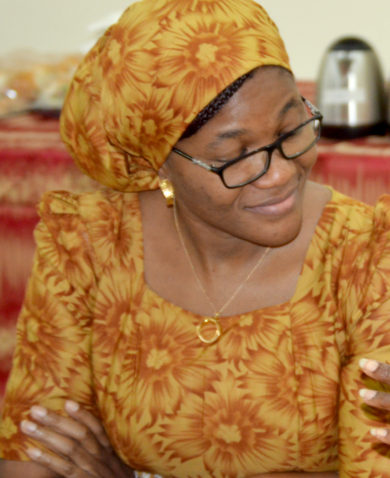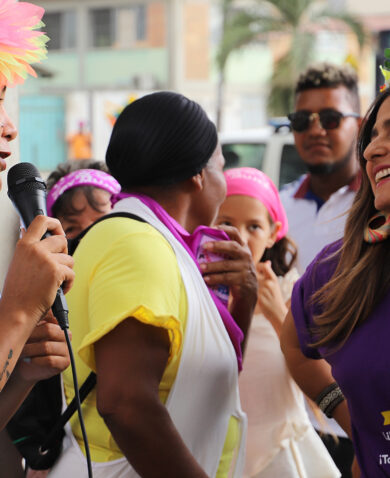
Be Bold for Change, in Big and Small Ways
March 7, 2017 | 3 Minute ReadFor an action to be bold, it doesn't necessarily need to be big. On International Women's Day, Director Kelly Cronen shares three small ways to be bold for change.
The theme for this year’s International Women’s Day, “Be Bold for Change,” conjures up images of making big strides for women’s equality. While big actions, such as the recent women’s marches around the world, are a highly visible call for equality, the smaller bold actions are just as important, if not more important, to advance equality both in the United States and internationally.
Over the past year, there has been renewed emphasis in the United States to acknowledge the need for promoting women’s rights. The response to these actions ranged from supportive to confused. Some wonder why women are calling for a renewed focus on women’s rights because at the surface level, women have already made significant strides toward equality. Women are active in all sectors across the country, at nearly all levels of government, and participate in the labor market at levels nearly equal to their male counterparts.
Yet if we look more closely at the state of gender equality in the United States, and what equality means in our daily lives, there is still a long way to go, especially for women of color or women with disabilities. Many of us are familiar with the statistic that women on average still only make 78 cents to every dollar a man earns, but that statistic only compares white women to white men. African American women make 64 cents to every dollar and Latina women make 54 cents compared to the earnings of the average white male.

Women hold approximately only 20 percent of congressional seats, and hold even fewer senior leadership positions in the private sector. Similar to the wage gap, the participation gap is also skewed toward higher participation rates of white women.
These gaps are not the result of major legislation or policy, but rather are influenced by implicit constraints and biases at a personal, day-to-day level, which create an operating environment that disfavors equality. While this presents a challenge, it also presents an opportunity. If the way we live our lives on a day-to-day basis creates the foundation for these gaps, bold action at the personal level also has the power to chip away at inequality both in the United States and through our work abroad.
While it can be hard to think of ways to be bold in our own lives, there are a couple of things we can start doing now:
1. Women’s equality should be inclusive
When talking about women’s equality, there is a tendency to treat women as a homogeneous group with the same opinions, resources, needs, and constraints. In reality, women are a diverse group with different issues. A bold action we can take to advance women’s equality is to support the participation of all women and recognize that while we’re all coming from different places — be it political opinions, religion, or another identity — we’re all trying to get to equality.
2. Learn about actual gaps and issues facing women
While it’s true that women in most countries have relative freedom of movement and opportunity to participate, the actual issues that affect our ability to participate and make decisions about our own lives are less blatant then whether or not we can leave the house. Across the board, women have higher HIV infection rates and tend to have lower decision-making power regarding their health-care choices, for example, and participation in the workforce is often saddled with the double burden of disproportionate household obligations. These issues then translate to the way the policy is handled or mishandled. Another bold action we can take is to stop using the number of women in the workforce as the proxy indicator for participation, and instead look more deeply into the actual issues and gaps that impact women’s participation.
3. Be inspired by women who are already taking bold action
More and more, popular culture is recognizing the amazing accomplishments and contributions made by women, from movies such as Hidden Figures, which celebrates women’s contributions to launching the first American astronaut to circle the Earth; to modern-day heroes such Haben Girma, who overcame tremendous odds to become the first deaf-blind person to graduate from Harvard Law School. Let’s be bold by recognizing and being inspired by the strides they are making.
On this International Women’s Day, remember that turning the tide toward gender equality around the world will require thousands of small, bold acts. Let’s commit to the principles of gender and social inclusion in our lives and our work and reaffirm that commitment each day.






























